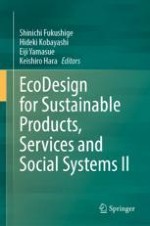2024 | OriginalPaper | Buchkapitel
7. State Prediction and Parts Replacement of a Manipulator Based on Assembly Model
verfasst von : Takahiro Tanaka, Hiroyuki Hiraoka
Erschienen in: EcoDesign for Sustainable Products, Services and Social Systems II
Verlag: Springer Nature Singapore
Aktivieren Sie unsere intelligente Suche, um passende Fachinhalte oder Patente zu finden.
Wählen Sie Textabschnitte aus um mit Künstlicher Intelligenz passenden Patente zu finden. powered by
Markieren Sie Textabschnitte, um KI-gestützt weitere passende Inhalte zu finden. powered by
